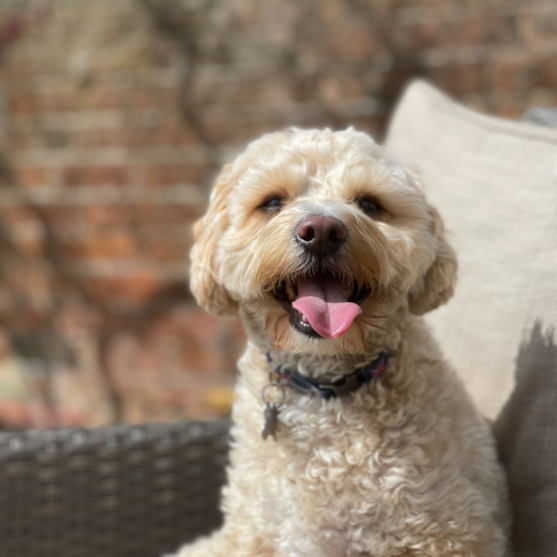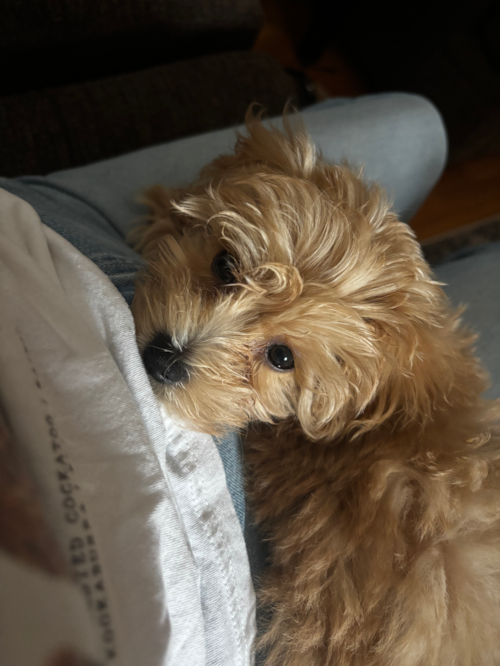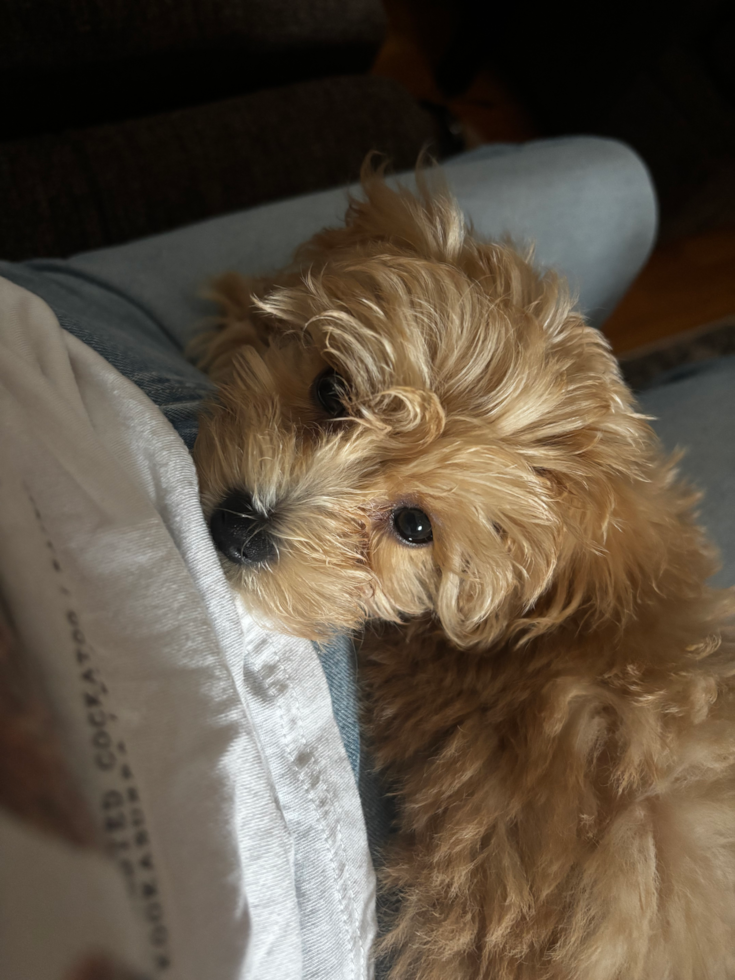Maltipoo Breed Information


The Maltipoo is a cheerful, affectionate, and endlessly adaptable companion, born from a cross between two of the most beloved toy breeds: the Maltese and the Poodle. Known for their soft coats, expressive faces, and emotional sensitivity, Maltipoos are often described as the perfect mix of charm and smarts. They’re small in size, but their personality fills the room.
As a Maltese Poodle mix, this breed was originally developed to create a loving, people-focused dog with low-shedding, allergy-friendly qualities. The result is a highly social, playful pup that fits naturally into households of all shapes and sizes—singles, seniors, families with kids, or anyone looking for a warm presence by their side.
Whether it’s an afternoon nap on the couch or a walk around the block, the Maltipoo is always happy to be involved. Their adaptability makes them a great choice for city apartments or suburban homes alike. And while they love attention, they’re not demanding—just deeply tuned in.
Because of their hypoallergenic reputation and gentle temperament, Maltipoos have quickly become one of the most popular designer dog breeds in the small dog category. They don’t just look sweet—they are sweet. Always up for a cuddle, a game, or a quiet moment, the Maltipoo is built for connection.
Characteristics
- Affectionate and people-focused – Maltipoos are happiest when they’re close to their humans. They love attention, seek out connection, and rarely stray far from your side.
- Smart and eager to please – Thanks to their Poodle parent, Maltipoos tend to be quick learners. They pick up routines, commands, and even fun tricks with surprising ease.
- Gentle with a playful streak – These dogs have a calm, cuddly side but also love bursts of energy. A short zoom around the living room or a quick game with a toy brings out their lively spirit.
- Compact and portable – Most Maltipoos weigh between 5 and 20 pounds, depending on whether the Poodle parent was a toy or miniature. They’re easy to carry, travel with, and manage in small spaces.
- Low-shedding and allergy-friendly – Many Maltipoos inherit the soft, curly coat that makes them a good fit for allergy-sensitive homes. While not 100% hypoallergenic, they’re often easier to live with than heavier-shedding breeds.
- Adaptable to routines – Whether your home is calm and quiet or full of movement, the Maltipoo adjusts. They’re naturally tuned into your energy and tend to follow your pace.
- Alert but not yappy – They’ll let you know when someone’s at the door, but they’re not excessive barkers when their needs are met. Early training helps them find their calm.
- Sensitive and expressive – The Maltipoo temperament is emotionally rich. They respond to tone, body language, and mood, making them highly intuitive companions.
- Friendly with kids and pets – With the right socialization, Maltipoos usually get along well with other animals and are gentle enough to share space with children.

Appearance
The Maltipoo is a small designer dog with a soft, inviting look and an expression that feels almost human in its warmth. Their appearance can vary slightly from dog to dog, depending on which parent breed they take after more strongly, but the overall look is consistently charming, polished, and unmistakably adorable.
Most Maltipoos weigh between 5 and 20 pounds, standing 8 to 14 inches tall at the shoulder. Those with a Toy Poodleparent are typically on the smaller side, while crosses with a Miniature Poodle tend to be slightly taller and longer. Regardless of size, they’re compact, balanced, and carry themselves with confidence.
The Maltipoo coat is one of the breed’s most talked-about features. It can be wavy, curly, or slightly straighter, and it’s almost always soft to the touch. Many Maltipoos have a coat that resembles a light fleece—fluffy but not overly dense, and more hair-like than fur. This quality contributes to the breed’s reputation as low-shedding and allergy-friendly, though grooming is essential to maintain it.
Coat colors vary widely. White and cream are most common, but Maltipoos also come in apricot, tan, black, gray, and chocolate, often with lighter or darker shading throughout. Some have markings or a soft fading pattern that changes as they age.
Their eyes are round, dark, and expressive, giving off a gentle, curious gaze. Ears tend to flop close to the cheeks and are usually covered in feathery hair that blends into the face. The muzzle is short but not flat, with a neatly defined nose that adds to their clean, tidy profile.
Photos
Temperament
The Maltipoo temperament is what draws so many people to this hybrid—it’s affectionate, upbeat, and wonderfully in tune with its surroundings. A true small companion dog, the Maltipoo thrives on connection and responds best in homes where they feel included, seen, and gently guided.
This is a breed that doesn’t do well with distance. Maltipoos crave companionship and often follow their owners from room to room, not out of anxiety, but simply because they enjoy the closeness. They bond deeply and tend to be emotionally aware—picking up on changes in your tone or mood with surprising sensitivity.
Despite their size, they’re not shy about expressing themselves. Whether it’s bringing over a toy, sitting patiently at your feet, or chirping with excitement when you come home, Maltese Poodle mix behavior is lively and full of heart. They’re not loud by nature, but they will let you know how they feel—especially if they sense you’re ignoring them.
With the intelligence of the Poodle and the sweetness of the Maltese, Maltipoos are eager to please and quick to learn. They do best in homes where calm, positive interaction is the norm. Harsh tones or erratic schedules can stress them out, while steady routines and soft encouragement help them flourish.
They’re usually friendly with strangers and tend to get along well with other pets, especially when socialized early. Around children, their gentle nature shines, but supervision is key—Maltipoos are small, and rough play can overwhelm them.
Care
Grooming
The Maltipoo has a soft, often curly coat that gives them their signature fluffy look—but it also means that grooming is part of everyday life. Whether your Maltipoo’s coat leans more toward the wavy texture of the Maltese or the tighter curls of the Poodle, regular grooming is essential to keep their hair clean, comfortable, and tangle-free.
Most Maltipoos need brushing at least three to four times a week—and in many cases, daily brushing is ideal, especially for longer coats. This keeps mats from forming, particularly around the ears, legs, and chest where tangles tend to sneak in. A slicker brush or steel comb works best for loosening knots and maintaining a smooth finish.
Because the Maltipoo grooming needs vary slightly from dog to dog, many owners choose to keep the coat trimmed short in a teddy bear or puppy cut. This not only reduces maintenance time but also helps the dog stay cooler and more comfortable in warm weather. For those who prefer a longer, showier look, more frequent brushing and bathing are required.
Speaking of baths—every three to four weeks is usually plenty unless your dog gets into something messy. Always use a gentle, dog-safe shampoo, as Maltipoos can have sensitive skin. After bathing, be sure to dry them thoroughly and brush through the coat again to prevent tangles from forming as it dries.
Ears should be checked weekly and cleaned as needed, especially if your dog has floppy ears that hold moisture. Routine dental care is also important, as small breeds like the Maltipoo are prone to plaque buildup and gum sensitivity. Brushing several times a week, along with dental chews or rinses, helps maintain oral health.
Nail trims every few weeks keep their feet healthy and prevent discomfort. If you hear nails clicking on the floor, it’s time for a trim.
Exercise Needs
The Maltipoo may be small, but they’re lively, curious, and always ready to move. While they don’t need intense workouts to stay happy, they do need consistent daily activity to keep both their body and mind in balance. Their energy level is moderate—enough to stay playful and alert, but not so much that they become overwhelming.
Most Maltipoo exercise needs can be met with about 30 to 45 minutes of activity per day. That might include a couple of short walks, a few games indoors, or some time chasing toys in the backyard. Because of their size, they don’t need wide open spaces—a hallway or a small fenced yard often does the trick.
This is a breed that enjoys movement in short bursts. A quick sprint around the living room, a gentle game of tug, or a bit of play with another pet keeps them content and calm. They’re especially happy when they get to interact—activity that involves their people always tops the list.
Mental stimulation is just as important. Maltipoos are smart, and without a little challenge in their routine, they can get bored. Training sessions, puzzle toys, or even hiding treats around the house for them to sniff out adds variety and keeps their mind engaged.
If left alone too long or under-stimulated, they may become restless or bark more than usual. A predictable routine and plenty of interaction help avoid those behaviors. And while they can match your pace on a calm day, they’re also happy to tag along for short errands or meet-and-greets at the park.
Even as they grow older, many Maltipoos maintain a playful, puppy-like spirit. Adjusting the intensity of activities to match their age keeps them moving without putting stress on their joints or energy reserves.
Health
The Maltipoo is generally a healthy little dog, especially when sourced from a reputable breeder and raised in a stable, loving home. Thanks to their hybrid background, they often benefit from something known as hybrid vigor—a tendency for mixed breeds to have fewer inherited issues than their purebred parents. Still, like all dogs, Maltipoos have a few common health concerns that responsible owners should keep in mind.
Among the more typical Maltipoo health issues are dental disease, allergies, and patellar luxation. Small breeds like this are particularly prone to plaque buildup and gum sensitivity, which can lead to tooth loss over time. Regular brushing and annual cleanings are the best line of defense.
Allergies—both food-related and environmental—may also surface in some dogs. These often show up as skin irritation, ear infections, or mild gastrointestinal discomfort. Many cases are manageable through diet changes, grooming product adjustments, or vet-prescribed medications.
Joint issues such as patellar luxation, where the kneecap slips out of place, are also seen from time to time. It's often mild and may not interfere with daily life, but early diagnosis and maintaining a healthy weight can help keep the condition in check.
Preventive care is key. A consistent schedule of vaccinations, flea and tick protection, dental hygiene, and wellness checks goes a long way in supporting long-term health. Most Maltipoos live long, happy lives with few complications when cared for properly.
Lifespan
The Maltipoo is known for being a long-living small dog, with most individuals enjoying a lifespan of 12 to 16 years. Many stay active and connected well into their senior years, especially when given steady care, a healthy diet, and regular veterinary attention.
Because of their mixed lineage, Maltipoos can inherit the longevity seen in both the Maltese and the Poodle—two breeds that often live well into their teens. With that foundation, most Maltipoos grow into older age gracefully, maintaining their affectionate nature and soft energy as they slow down just a little.
Caring for a Maltipoo through every life stage means adjusting their routine as they age. Senior care for Maltipoos may include shorter walks, softer beds, easier-to-chew food, and more frequent checkups. These small changes help support comfort, mobility, and overall quality of life during the later years.
Dental health, weight management, and early detection of age-related conditions all play a big role in how long—and how well—Maltipoos live. Because they’re so closely bonded with their humans, they also benefit emotionally from a calm, familiar routine. Changes in environment or daily rhythm can sometimes be harder on older dogs, so stability goes a long way.
Emotionally, they tend to stay steady. Even if their pace slows, they remain just as engaged with their surroundings and affectionate with their people. A senior Maltipoo is often calmer, more cuddly, and even more emotionally tuned in than during their younger years.
Training
The Maltipoo is a bright, emotionally intuitive dog that responds well to structure, patience, and gentle encouragement. Thanks to their Poodle parent’s intelligence and the Maltese’s eagerness to please, this mix is often a fast learner when training is approached with consistency and care.
One of the keys to successful Maltipoo training is keeping sessions short, light, and positive. These dogs don’t respond well to harsh corrections or frustration—they’re sensitive by nature, and a raised voice can set them back. Instead, reward-based methods work best. Treats, praise, and play go a long way in reinforcing good behavior.
Basic obedience—commands like “sit,” “stay,” “come,” and leash walking—is usually easy for them to grasp, especially when introduced early. Because of their size and emotional attachment, Maltipoos also benefit from training that helps build independence. Teaching them to feel comfortable alone for short periods can prevent separation anxiety later on.
House training may take a little patience. Like many small dogs, Maltipoos have smaller bladders, which can make early potty training a bit more involved. Crate training and a consistent schedule help build good habits over time.
Socialization is just as important as obedience. Introducing your Maltipoo to new sights, sounds, and people early on helps prevent timid or reactive behavior down the road. Calm exposure, paired with positive reinforcement, helps build confidence and emotional steadiness.
Because they’re smart, Maltipoos also enjoy mental challenges. Puzzle toys, new tricks, and interactive games help keep them sharp. Without enough stimulation, they may turn to barking or attention-seeking behaviors—so a bit of daily mental exercise goes a long way.
History
The Maltipoo is a relatively recent addition to the dog world, but its appeal has grown rapidly thanks to a winning mix of charm, intelligence, and low-shedding appeal. Like many designer dog breeds, the Maltipoo was developed with the goal of combining the best qualities of two well-loved purebreds—in this case, the Maltese and the Poodle.
The breed likely originated in the United States in the late 20th or early 21st century, during a time when interest in hybrid dogs was rising. Breeders and pet owners alike were looking for dogs that not only had a friendly, people-centered temperament but also shed less and fit easily into modern home life. The Maltipoo met that demand, offering an affectionate, adaptable dog with a coat that’s easier on allergy sufferers.
To understand the Maltipoo history, it helps to look at the background of the two parent breeds. The Maltese is one of the oldest toy breeds in the world, dating back thousands of years to the Mediterranean region. These dogs were bred solely for companionship and were prized in aristocratic households for their beauty and sweet disposition.
The Poodle, while often associated with elegance and style, has roots in Germany and France as a working retriever—specifically developed to retrieve waterfowl. Over time, the breed evolved into various sizes, with Toy and Miniature Poodles becoming staples in city homes due to their intelligence and manageable size.
By bringing these two breeds together, the Maltipoo was intentionally designed to be an ideal small companion dog—one that blends warmth, smarts, and a manageable grooming routine. While not recognized by major kennel clubs like the AKC (since it’s a mixed breed), the Maltipoo is widely acknowledged by hybrid dog registries and celebrated by owners around the world for its loyalty, playfulness, and charm.
Today, the Maltipoo continues to grow in popularity, particularly among urban dwellers, families, and first-time dog owners. Its history may be young, but its rise has been steady—and its role as a loving, adaptable companion is already well-established.






